Introduction
Have you ever wondered how tall you are? Or how much you weigh? What about how hot or cold you feel when you’re sick? All of these answers come from measurement! In school, we often measure many things—like the height of a student, the weight using a weighing machine, or the temperature with a thermometer, as shown in the image given above. These help us know more about ourselves and the world around us.
In school, we often measure many things—like the height of a student, the weight using a weighing machine, or the temperature with a thermometer, as shown in the image given above. These help us know more about ourselves and the world around us.
In this chapter, we’re going to focus on length—how long or short things are. You’ll learn how to measure things like your pencil, your desk, or even how far your classroom door is from your seat.
So get ready to look around, pick up your ruler, and start measuring!
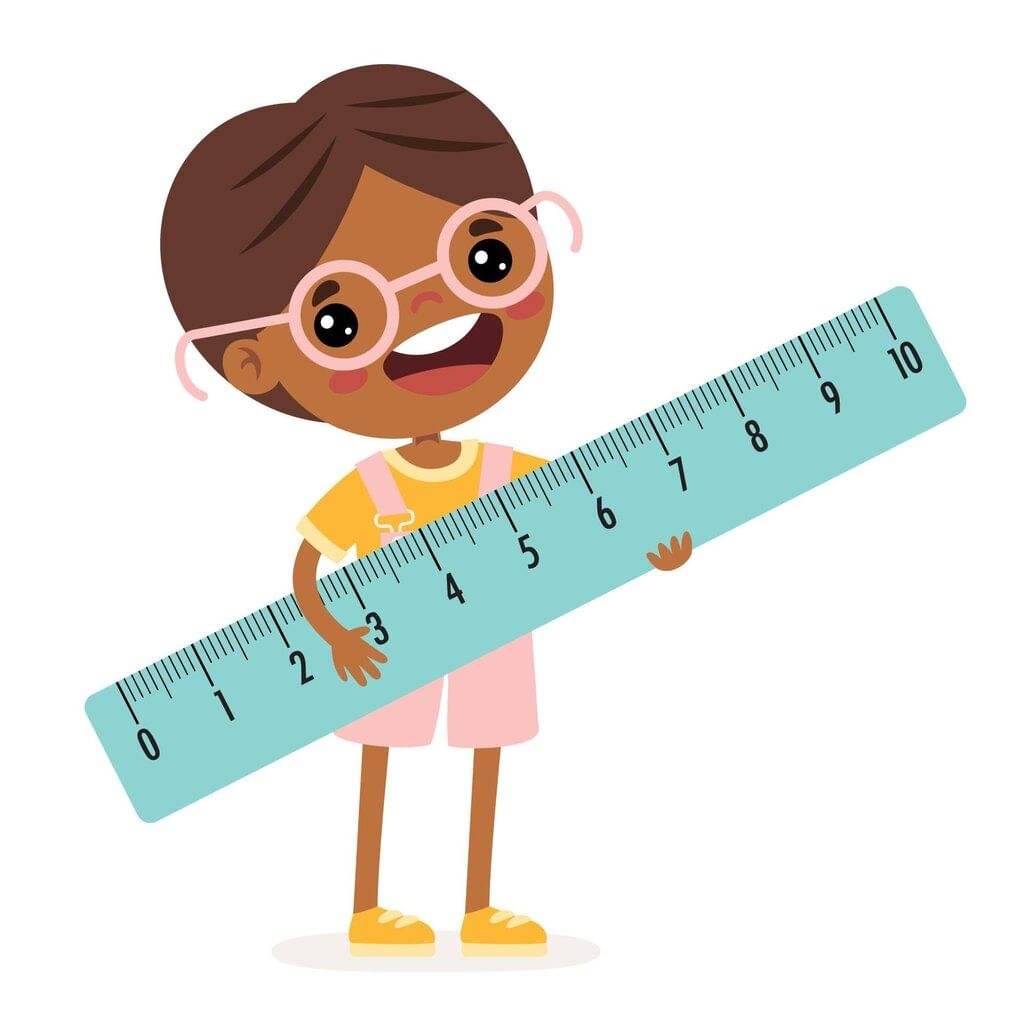 A student using a measuring tape to measure length
A student using a measuring tape to measure length

Remember, we made 1 metre (m), half metre (1/2 m), and quarter metre (1/4 m) ropes. Let us make them again.

We noticed that,
1 m = ½ m + ½ m and 1 m = ¼ m + ¼ m+ ¼ m + ¼ m and ½ m = ¼ m + ¼ m.
Measuring Small Things
For very small objects, we need a smaller unit than meters. That's where centimeters come in handy.
A standard meter scale is divided into 100 equal parts, and each part is called a centimeter (cm).
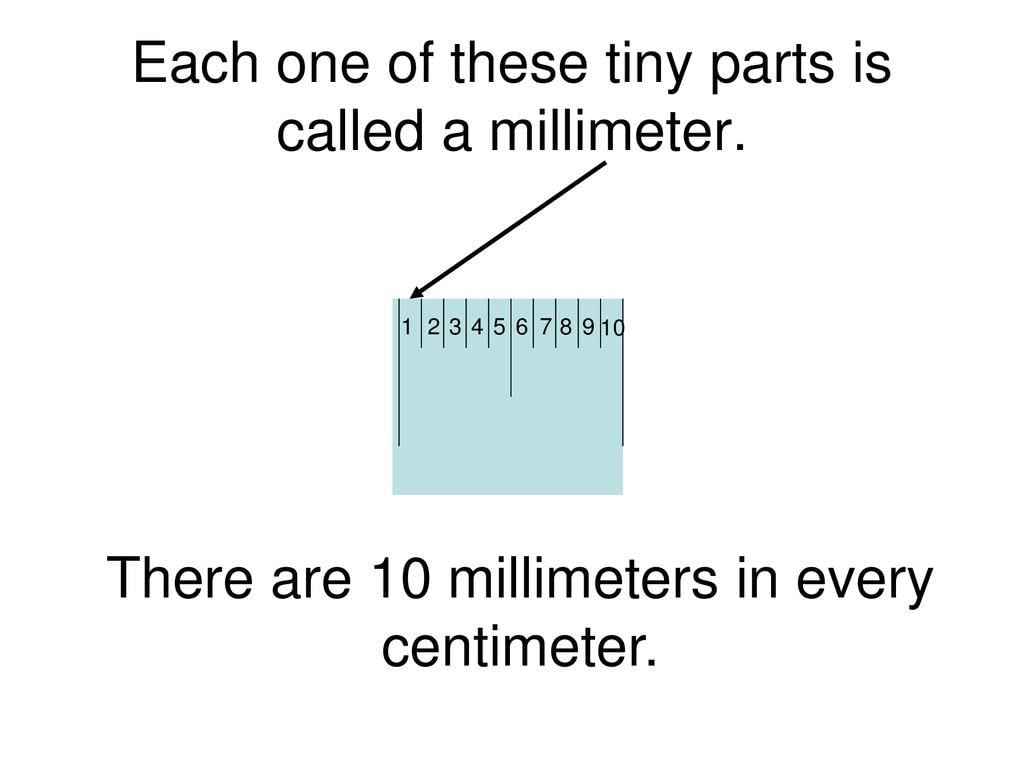
Chutki is measuring how tall her plant grows using a measuring tape, just like how a tailor uses it for clothes.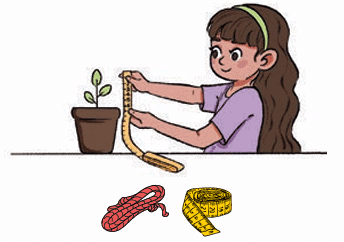
What is she using?
- A measuring tape or scale with numbers marked on it.
- Each number on the tape represents centimetres (cm).
- The small red bars show 1 cm each.

What do we see?
- When 10 red bars are placed side by side, they make 10 cm.
- If we place 100 red bars, it becomes 1 metre (m).

Measuring a Pencil
Measuring the length of a pencil using a ruler showing centimetres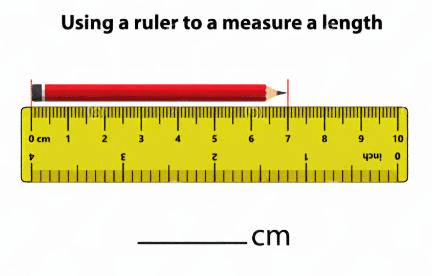
There are several tools we can use to measure length: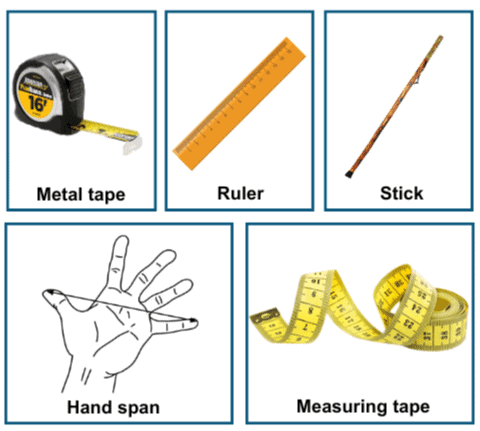 Tools for Measuring Length
Tools for Measuring Length
A meter stick is exactly 1 meter long and is marked with centimeters and sometimes millimeters. We can use it to measure objects up to 1 meter in length.
A measuring tape is flexible and can be used to measure curved surfaces or longer distances. Tailors use measuring tapes to measure body dimensions for making clothes.
A ruler is a smaller measuring tool, usually 15 or 30 centimeters long. It's perfect for measuring smaller objects like pencils, erasers, or books.
Question for Chapter Notes: Measuring Length
Try yourself:What instrument is used to measure the height of a plant?
Explanation
Measuring tape can be used to measure plant's height
- A measuring tape has numbers marked on it.
- Each number represents centimeters (cm).
- This helps in measuring small objects accurately.
Report a problem
Metres and Centimetres
Ramu and Shamu are using a measuring tape to check their heights.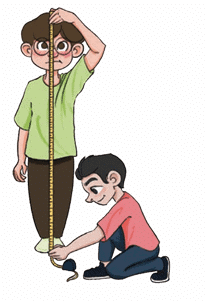
- Ramu says his height is 120 centimetres (cm).
- Shamu says his height is 1 metre 20 centimetres (1 m 20 cm).
But wait… are they both right?
Yes! Both are correct.
Why?
- 1 metre = 100 centimetres
- So, 1 metre 20 centimetres = 100 cm + 20 cm = 120 cm

That means 120 cm and 1 m 20 cm are the same!

Bhola is building a wall using bricks around his vegetable garden. He wants to put bricks only along the edge, not inside the garden.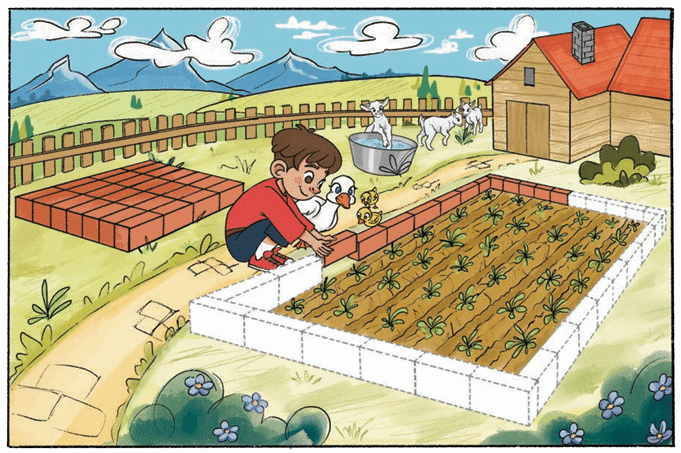
The outside edge of any shape is called the boundary.
The length of the boundary is called the perimeter.
So when Bhola asks:
“How many bricks will I need to make the boundary?”
He’s actually trying to find the perimeter of the garden.
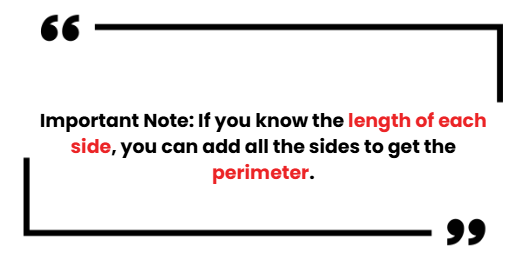
Some Solved Examples
Example 1: A table is 1 meter 75 centimeters long. A bench is 125 centimeters long.
Which one is longer and by how much?
Ans: Convert both to centimeters:
1 meter 75 cm = 100 + 75 = 175 cm
Bench = 125 cm
Now subtract:
175 cm – 125 cm = 50 cm
Example 2: Your notebook is about 30 cm long. Estimate how many notebooks placed end-to-end will measure about 3 meters.
Ans: Convert 3 meters to centimeters:
3 × 100 = 300 cm
Now divide:
300 ÷ 30 = 10 notebooks
Example 3: You need to measure the length of a room. Which tool will you use:
a) Ruler
b) Meter stick
c) Measuring tape
Ans: Measuring tape because a room is long, and a measuring tape is flexible and can measure large distances easily.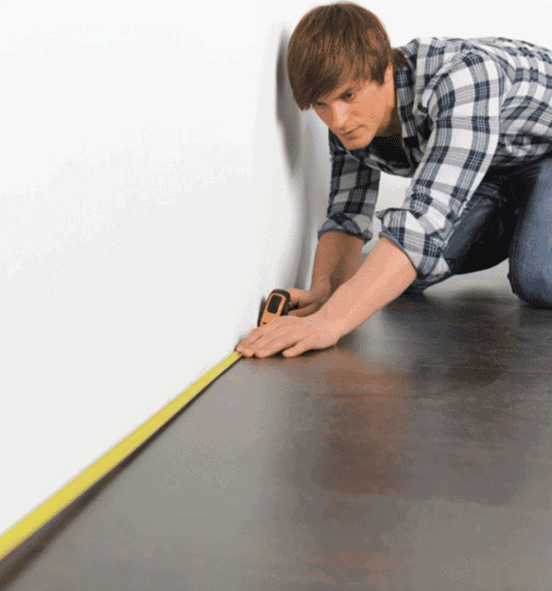






 In school, we often measure many things—like the height of a student, the weight using a weighing machine, or the temperature with a thermometer, as shown in the image given above. These help us know more about ourselves and the world around us.
In school, we often measure many things—like the height of a student, the weight using a weighing machine, or the temperature with a thermometer, as shown in the image given above. These help us know more about ourselves and the world around us.






























